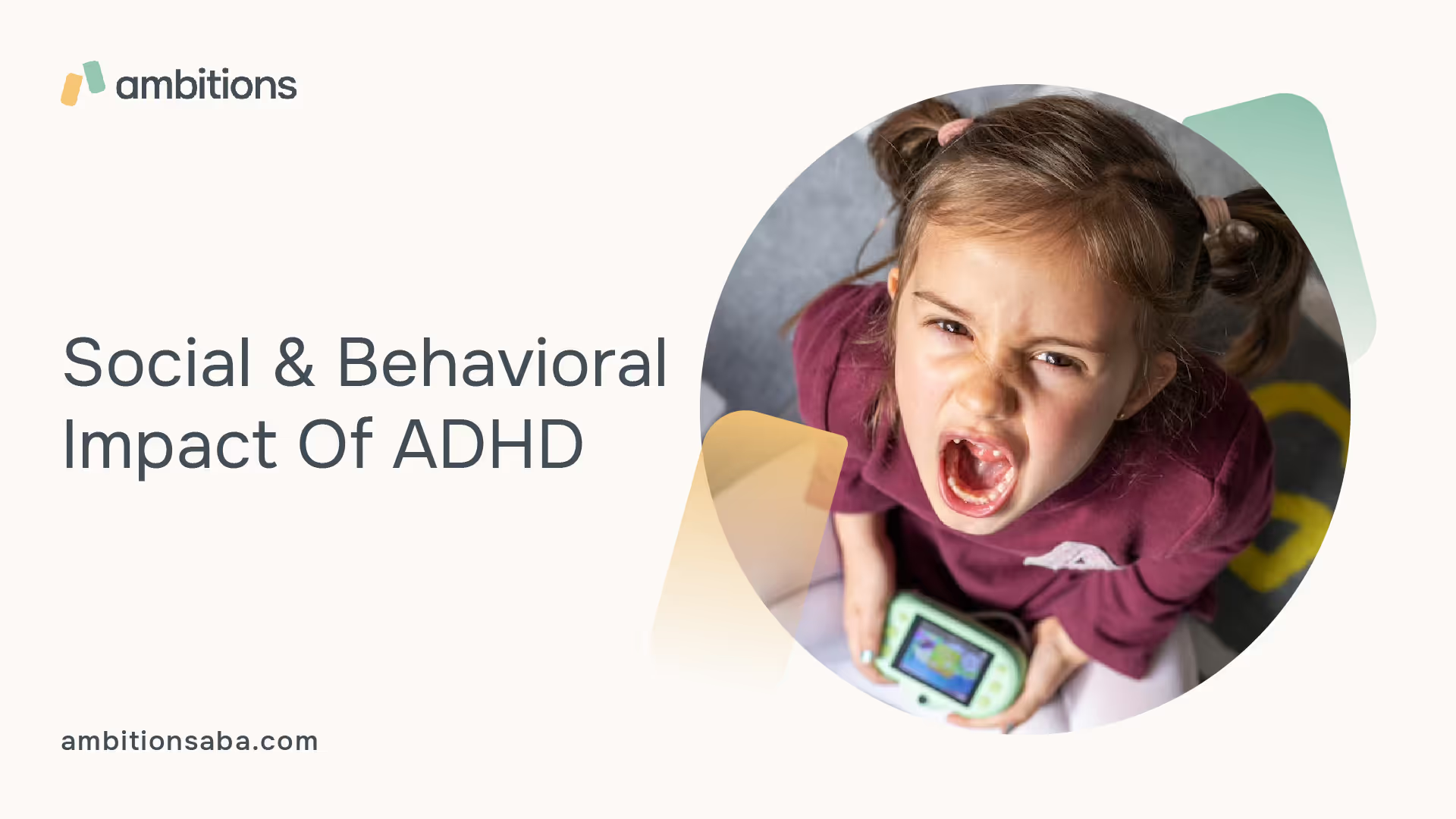Key ADHD Facts & Statistics

Attention deficit hyperactivity disorder (ADHD) is a neurodevelopmental disorder that affects millions of people worldwide. ADHD is typically diagnosed during childhood but can persist into adulthood. In this article, we will explore the statistics surrounding ADHD, including prevalence rates, gender differences, and comorbidity rates.
How Common Is ADHD?
- ADHD affects an estimated 5-7% of children worldwide, making it one of the most common childhood neurodevelopmental disorders. (CDC)
- Boys are diagnosed with ADHD at a higher rate than girls, with a male-to-female ratio of around 2:1 in childhood. (CDC)
- ADHD often persists into adolescence and adulthood, with approximately 60% of children with ADHD continuing to exhibit symptoms in adulthood. (CHADD)
- The estimated prevalence of ADHD in adults is around 2.5% worldwide. (American Psychiatric Association)
ADHD Risk Factors & Demographics:
- Genetic factors play a significant role in ADHD development. Children with a family history of ADHD have a higher risk of developing the condition themselves. (National Institute of Mental Health)
- Low birth weight, premature birth, and exposure to toxins during pregnancy are potential risk factors for ADHD. (CDC)
- Children from low-income families are more likely to be diagnosed with ADHD. (CDC)
- In the United States, the prevalence of ADHD is higher in non-Hispanic white children than in non-Hispanic black or Hispanic children. (CDC)
ADHD's Impact on Education & Learning
- ADHD is associated with academic challenges, with students with ADHD often struggling with learning, organization, and time management. (National Resource Center on ADHD)
- Children with untreated ADHD are more likely to experience academic underachievement, lower grades, and higher rates of grade retention. (CDC)
- Students with ADHD may require special education services or classroom accommodations to support their learning needs. (CDC)
ADHD Comorbidities & Mental Health:
- Around 50-60% of individuals with ADHD have at least one comorbid mental health disorder, such as anxiety, depression, or oppositional defiant disorder. (American Psychiatric Association)
- Adolescents and adults with ADHD have an increased risk of developing substance use disorders. (Journal of the American Academy of Child & Adolescent Psychiatry)
Social & Behavioral Impact Of ADHD

- Children with ADHD may face challenges in social interactions and friendships due to impulsivity and difficulty with social cues. (CDC)
- Adults with ADHD may experience difficulties in maintaining relationships and may have higher rates of divorce. (ADHD Institute)
- Untreated ADHD can lead to higher rates of accidents and injuries, especially in children and adolescents. (CHADD)
ADHD Treatment & Management Statistics
- Behavioral therapies, such as behavior modification and parent training, are recommended as the first-line treatment for preschool-aged children with ADHD. (American Academy of Pediatrics)
- Stimulant medications, such as methylphenidate and amphetamine-based drugs, are the most commonly prescribed medications for ADHD. (National Institute of Mental Health)
- Non-stimulant medications, such as atomoxetine and guanfacine, are alternative treatment options for individuals who do not respond to stimulants or prefer non-stimulant options. (CDC)
- Multimodal treatment approaches, combining behavioral therapy and medication, are often the most effective in managing ADHD symptoms. (American Academy of Pediatrics)
ADHD Public Awareness & Access to Care:
- Despite the prevalence of ADHD, there is still stigma and misconceptions surrounding the condition. (ADHD Awareness Month)
- Access to comprehensive and timely ADHD evaluation, diagnosis, and treatment services remains a challenge for many individuals, particularly in low-income communities. (Journal of Child Psychology and Psychiatry)
Understanding the prevalence, risk factors, and impact of ADHD is crucial in promoting early detection, intervention, and support for individuals affected by the disorder. Public awareness and access to appropriate resources can greatly improve the quality of life for those living with ADHD.
Maternal Age at Childbirth and Risk for ADHD
Research has shown that maternal age at childbirth may be associated with an increased risk of ADHD in offspring. Several studies have suggested that children born to mothers who are younger or older than average may be more likely to develop ADHD compared to children born to mothers in their 20s or early 30s.
A study published in JAMA Pediatrics in 2017 found that children born to mothers who were under 20 years old had a 50% higher risk of developing ADHD compared to children born to mothers aged 25-29. Similarly, children born to mothers aged 35 years or older had a 30% higher risk of ADHD compared to children born to mothers aged 25-29.
Other studies have also suggested that the relationship between maternal age and ADHD risk may be influenced by factors such as maternal education level, family income, and other environmental and genetic factors.
These findings do not necessarily mean that maternal age directly causes ADHD in offspring. Rather, they highlight the need for further research into the complex interplay of genetic and environmental factors that contribute to ADHD risk, and for efforts to identify and support children who may be at increased risk for the disorder.
Percent of Employed People With ADHD

According to a study published in the Journal of Occupational Health Psychology in 2018, adults with ADHD were found to be significantly more likely than adults without ADHD to experience job instability and unemployment. The study found that only 61% of adults with ADHD were employed, compared to 81% of adults without ADHD.
FAQs
What is the most common age group to be diagnosed with ADHD?
The highest rates of diagnosis for ADHD occur in children aged 6-11 years. However, the disorder can persist into adulthood, and approximately 2.5% of adults have been diagnosed with ADHD.
Are boys more likely to be diagnosed with ADHD than girls?
Yes, boys are more likely to be diagnosed with ADHD than girls, with a male-to-female ratio of around 3:1. However, some studies suggest that girls may be underdiagnosed due to differences in symptom presentation and diagnostic biases.
What other mental health conditions are commonly associated with ADHD?
Approximately two-thirds of children with ADHD have at least one other co-occurring mental health condition. These conditions may include anxiety, depression, and conduct disorder. In adults with ADHD, comorbidity rates are even higher and may include anxiety, depression, substance use disorders, and social and occupational impairments.
What percentage of children with an ADHD diagnosis receive treatment?
According to recent statistics from the Centers for Disease Control and Prevention (CDC), approximately 62% of children aged 2-17 years who have been diagnosed with ADHD receive treatment. Treatment rates vary by age group, ranging from 47% for children aged 2-5 years to 69% for children aged 6-11 years.
How many children in the United States have been diagnosed with ADHD?
According to recent statistics from the CDC, approximately 6.1 million children in the United States have been diagnosed with ADHD. This represents a prevalence rate of around 9.4% among children aged 2-17 years.
How do social and cultural expectations contribute to gender differences in ADHD diagnosis rates?
Social and cultural expectations may play a role in the gender differences observed in ADHD diagnosis rates. Boys are often expected to be more active and "rough-and-tumble" than girls, which may lead to their hyperactive and impulsive behaviors being interpreted as typical boyhood behavior rather than a symptom of ADHD. Additionally, unconscious biases or stereotypes about gender and behavior may contribute to diagnostic disparities between boys and girls.
Conclusion
ADHD is a common neurodevelopmental disorder that affects millions of people worldwide. The prevalence of ADHD varies by age and gender, with boys more likely to be diagnosed than girls. ADHD is often associated with other mental health conditions, particularly in adults. It is important to raise awareness of ADHD and its associated comorbidities in order to improve the diagnosis and treatment of this disorder.



